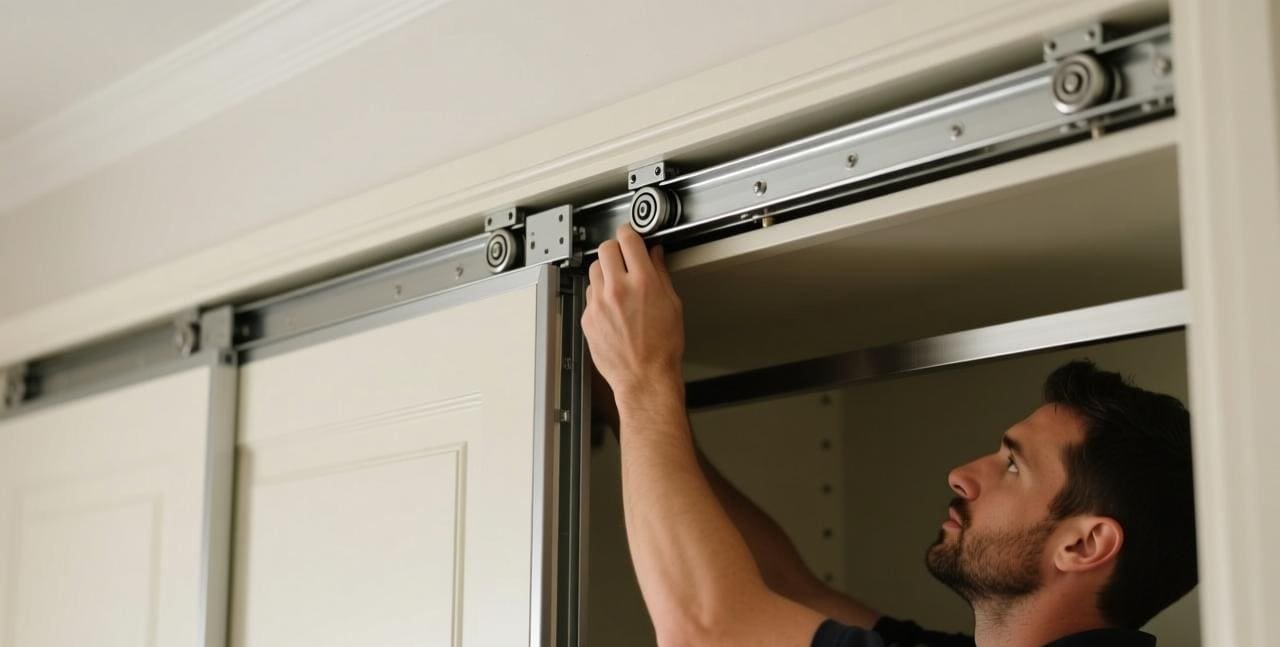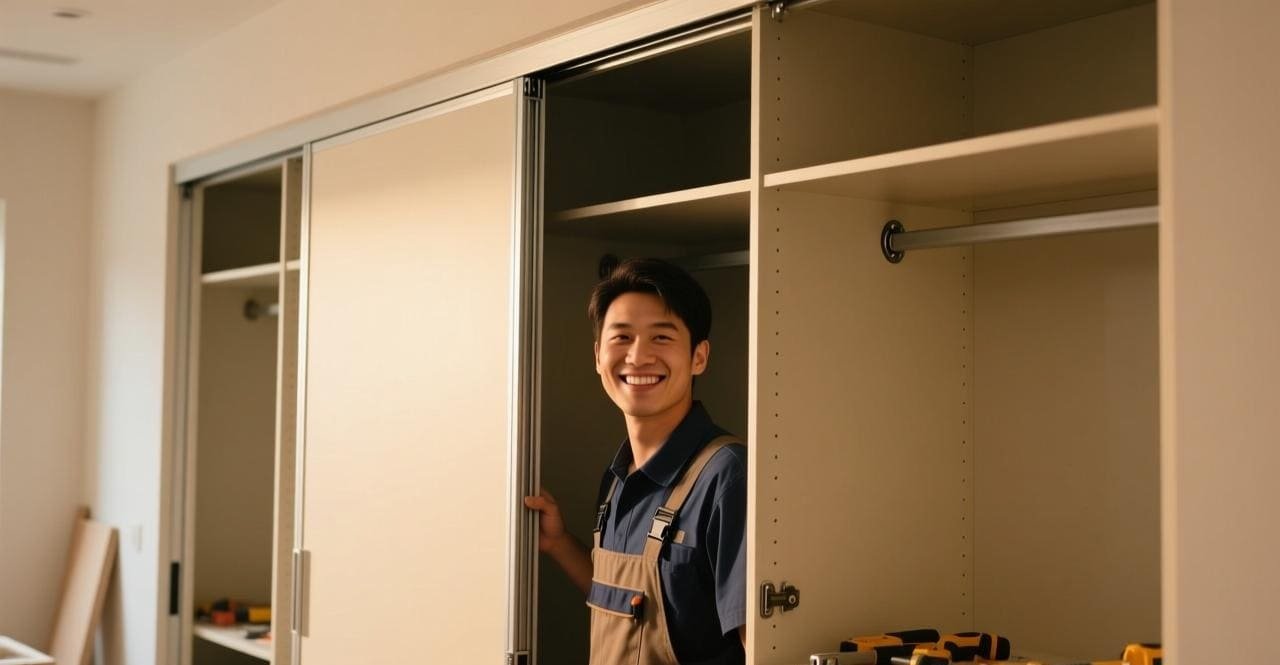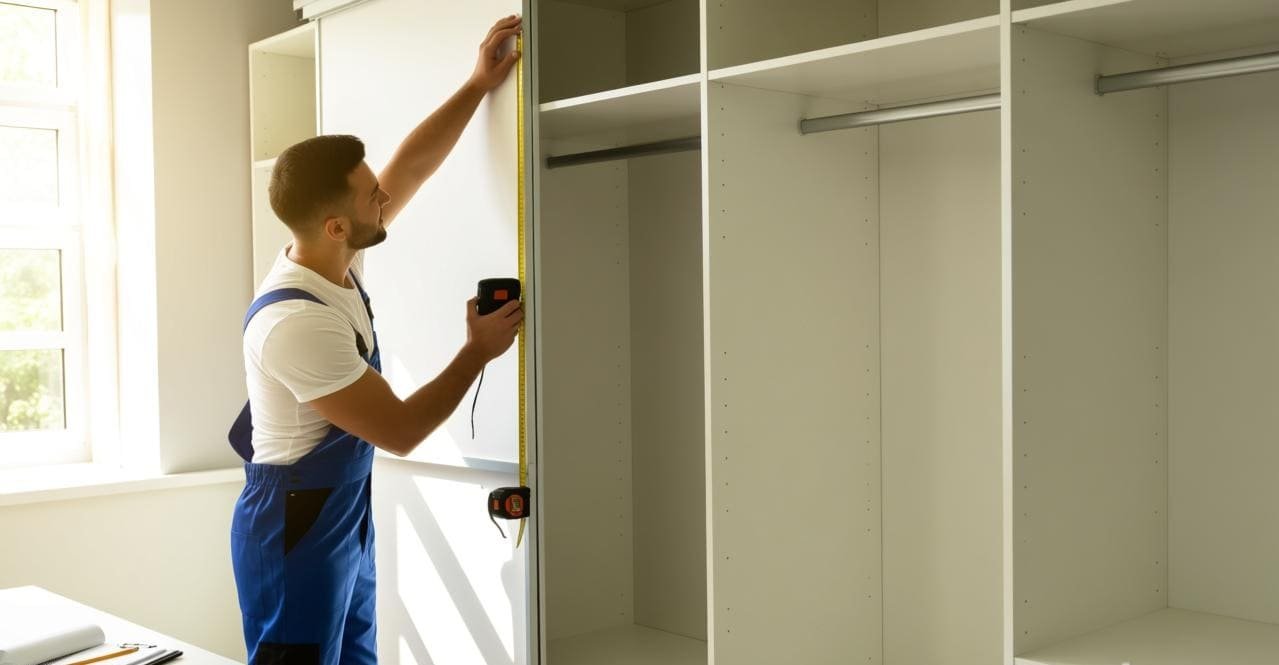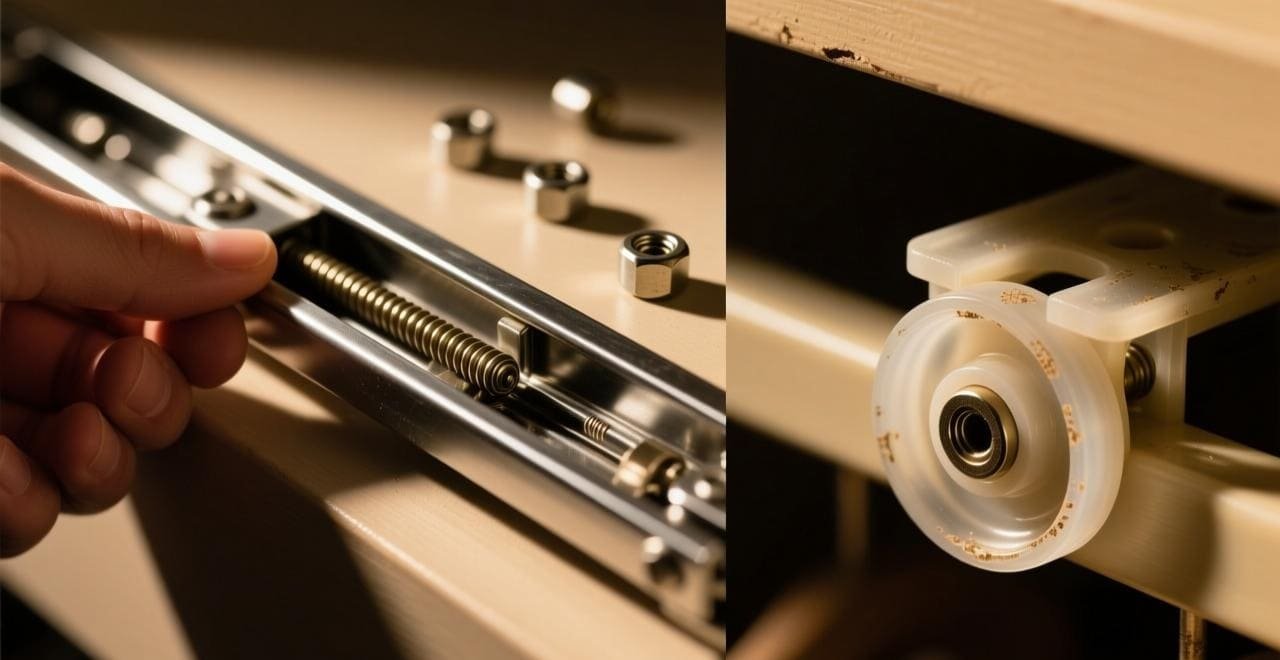Struggling with flimsy, jamming wardrobe doors? Poor quality slides can break and ruin a great furniture design. Learn the simple secrets to selecting durable, smooth-sliding hardware every time.
To choose the best wardrobe pulley slides, you must check the material quality, the weight of the rail, the smoothness of the pulley bearing, and the surface finish. Prioritize solid steel rails over those with many plastic components for better durability and a longer lifespan, ensuring smooth operation for years.

Choosing the right hardware seems simple, but the details make all the difference. As a factory owner, I’ve seen countless buyers make small mistakes that lead to big problems with their final products. It all comes down to knowing what to look for. Let’s break down the key factors so you can source with confidence and avoid costly errors. My goal is to help you get the best value and quality for your business.
How do you choose the right pulley?
Choosing the wrong pulley leads to callbacks and unhappy customers. If the hardware can’t handle the door’s weight, it will fail, damaging your reputation. I’ll show you exactly how to match the pulley to the job.
Choose the right pulley by first knowing the wardrobe door’s weight. Heavier doors need stronger pulleys with robust bearings. Always check the manufacturer’s specifications for the maximum load capacity. Don’t guess; verifying weight limits ensures safety, smooth function, and a long product life.

When you’re sourcing pulleys, the details are critical. As a purchasing manager, you need to think beyond just the initial cost. The performance of the entire wardrobe unit depends on this small component. In my experience, focusing on a few key areas makes the decision much easier and more reliable.
Material and Structure
The material is the foundation of a good pulley. Many low-cost options use a lot of plastic in their structure. While some high-grade nylon can be effective, a pulley with a solid metal body, especially steel, is almost always superior. It provides the strength needed to prevent deformation under the weight of heavy wooden or glass doors. Look at the bearings inside the wheel. Are they sealed? Sealed bearings are protected from dust and debris, which means they will roll smoothly for much longer.
Weight Capacity
This is a non-negotiable factor. A pulley rated for a 20kg door will fail quickly if installed on a 40kg door. This leads to sagging, difficult operation, and eventually, total failure. I always advise my clients to choose a pulley with a weight capacity1 that is at least 25% higher than the actual door weight. This extra buffer accounts for daily use and ensures the hardware won’t be stressed to its limit.
Here is a simple guide:
| Door Material | Typical Weight Range | Recommended Pulley Type |
|---|---|---|
| MDF / HDF Panel | 15-30 kg | Standard Nylon/Steel Pulley |
| Solid Wood | 30-50 kg | Heavy-Duty Steel Pulley with Ball Bearings |
| Glass with Frame | 40-70 kg | Heavy-Duty Steel or Aluminium Body Pulley |
How do you measure for sliding wardrobes?
Incorrect measurements are a costly mistake that can halt production. When the doors don’t fit, projects are delayed, materials are wasted, and profits shrink. Here is my simple guide to getting it right every time.
To measure for sliding wardrobes, first measure the total opening height and width. Take measurements at three different points for both height and width, and always use the smallest figure. Then, subtract the track system’s height from the opening height to get your door height.

Accurate measurements are the blueprint for a perfect installation. A few millimeters off can mean the difference between a door that glides effortlessly and one that scrapes, jams, or doesn’t fit at all. For buyers like you, ensuring the measurements are correct before placing a bulk order for hardware is essential. Let’s walk through the process I recommend to all my partners.
Step 1: Measure the Opening
Walls and floors are rarely perfectly straight. That’s why you must measure the height on the left, in the center, and on the right. Do the same for the width: measure at the top, middle, and bottom.
- For Height: Use the smallest of the three measurements. This ensures the door will fit even in the tightest part of the opening.
- For Width: Use the smallest of the three measurements for the same reason.
Step 2: Calculate Door Dimensions
Once you have your final opening dimensions, you can calculate the size of the doors.
- Door Height2: Take your final opening height and subtract the height of the top and bottom tracks. Your hardware supplier (like us at opensliding) can provide this dimension. This gives you the exact height for the door panel.
- Door Width3: This depends on the number of doors and the desired overlap. For a two-door system, a good starting point is to divide the total width by two and then add about 25mm (1 inch) for the overlap. This ensures there are no gaps when the doors are closed.
Getting this right ensures the pulleys and tracks you order will function perfectly within the finished wardrobe.
How does hardware quality define the best wardrobes?
A beautiful wardrobe can be a complete failure. If the doors stick, sag, or make noise after a few months, the customer will see it as a low-quality product. The hardware is the true test of quality.
The best wardrobes are defined by their hardware. Look beyond the cabinet finish. Open and close the doors. Do they slide smoothly and quietly? Check the tracks and pulleys. Are they made of solid metal or flimsy plastic? High-quality hardware means a high-quality, long-lasting wardrobe.

As someone who manufactures these components, I can tell you that the hardware is the heart of any sliding door system. A furniture factory can use the finest wood and the most beautiful finishes, but if they use cheap pulleys and tracks, the customer’s daily experience will be poor. Here is what I tell my B2B clients, like purchasing managers from furniture factories, to look for.
Visual Inspection: The Surface Treatment
You don’t need a manual to do the first check. Just look at the track. Is the finish—whether it’s anodized, painted, or plated—smooth and consistent4? Are there any scratches, bumps, or imperfections? A quality finish isn’t just for looks; it protects the metal from corrosion and ensures the pulleys glide smoothly over it. A poor finish can flake off and clog the system.
Feel the Weight: Structure and Materials
Pick up two different tracks of the same length. One will often feel significantly heavier than the other. The heavier one is usually made from thicker gauge steel or aluminum5. This thickness provides rigidity, preventing the track from bending or deforming under the weight of the doors. This is critical for longevity. A flimsy track will lead to sagging doors and operational problems down the line.
Test the Action: The Feel of Quality
Slide the pulley along the track by hand. It should feel solid and smooth, with no grittiness or excessive wobbling. A good pulley system feels responsive and silent. This simple test tells you a lot about the precision of the bearings and the quality of the wheel material.
| Quality Sign | High-Quality Hardware | Low-Quality Hardware |
|---|---|---|
| Weight | Feels substantial, heavy for its size. | Feels light, flimsy. |
| Material | Mostly solid metal (steel, aluminum). | Lots of thin plastic components. |
| Finish | Smooth, even, and durable coating. | Uneven, easily scratched, or thin. |
| Action | Glides silently and smoothly. | Makes noise, feels gritty or loose. |
How do you make wardrobe doors slide easier?
Are your end-users or clients complaining about sticky wardrobe doors? A jamming door is frustrating and reflects poorly on your product’s quality. Here are some simple professional tips to ensure a smooth slide.
To make wardrobe doors slide easier, first, thoroughly clean the tracks and rollers of any dust and debris. Then, apply a small amount of a silicone-based lubricant to the track. Avoid oil-based lubricants, as they attract more dirt. Also, check that the door is aligned correctly in the track.

While starting with top-quality hardware is the best way to prevent problems, even the best systems can face issues over time if not maintained. When a customer complains about a door not sliding properly, it’s usually due to one of a few common causes. Here’s a quick guide for troubleshooting that you can use or pass on to your installation teams.
Step 1: Clean the Tracks and Rollers
This is the most common fix. Dust, hair, and other debris naturally collect in the bottom track. Over time, this buildup can obstruct the rollers and cause them to stick or jump. Use a vacuum cleaner with a brush attachment to remove all loose debris. Then, wipe the inside of the track with a damp cloth to get rid of any remaining grime. Also, carefully wipe the pulley wheels themselves.
Step 2: Lubricate Correctly6
After cleaning, lubrication can make a huge difference. The key is to use the right type.
- Do Use: A dry silicone spray or a wax-based lubricant. These create a slick surface without leaving a sticky residue that attracts more dust.
- Don’t Use: Oil-based lubricants like WD-40 for this job. They work initially but quickly become gummy as dust sticks to them, making the problem worse in the long run.
Step 3: Check for Alignment and Damage7
Check to see if the door is still sitting correctly in both the top and bottom tracks. Sometimes a door can be knocked slightly out of alignment. You can usually adjust this using the screws on the roller mechanism itself. While you’re there, inspect the rollers for any visible damage, like cracks or flat spots. If a roller is damaged, it must be replaced. This is why sourcing from a reliable factory is important—you need access to replacement parts.
Conclusion
Choosing the right wardrobe hardware is simple. Focus on solid materials, proper weight capacity, and smooth operation. Get these fundamentals right, and you will build a superior product every time.
Understanding weight capacity is crucial for safety and performance; learn how to choose the right pulley for your needs. ↩
Understanding how to calculate Door Height is crucial for ensuring a perfect fit and functionality of your sliding doors. ↩
Knowing how to determine Door Width helps avoid gaps and ensures smooth operation of your sliding door system. ↩
Understanding the importance of a smooth and consistent finish can help you choose quality materials that enhance durability and performance. ↩
Exploring the benefits of thicker gauge materials can provide insights into longevity and structural integrity in hardware. ↩
Understanding the right lubrication techniques can enhance the longevity and performance of your door rollers. ↩
Learning about door alignment and damage checks can prevent costly repairs and ensure smooth operation. ↩

